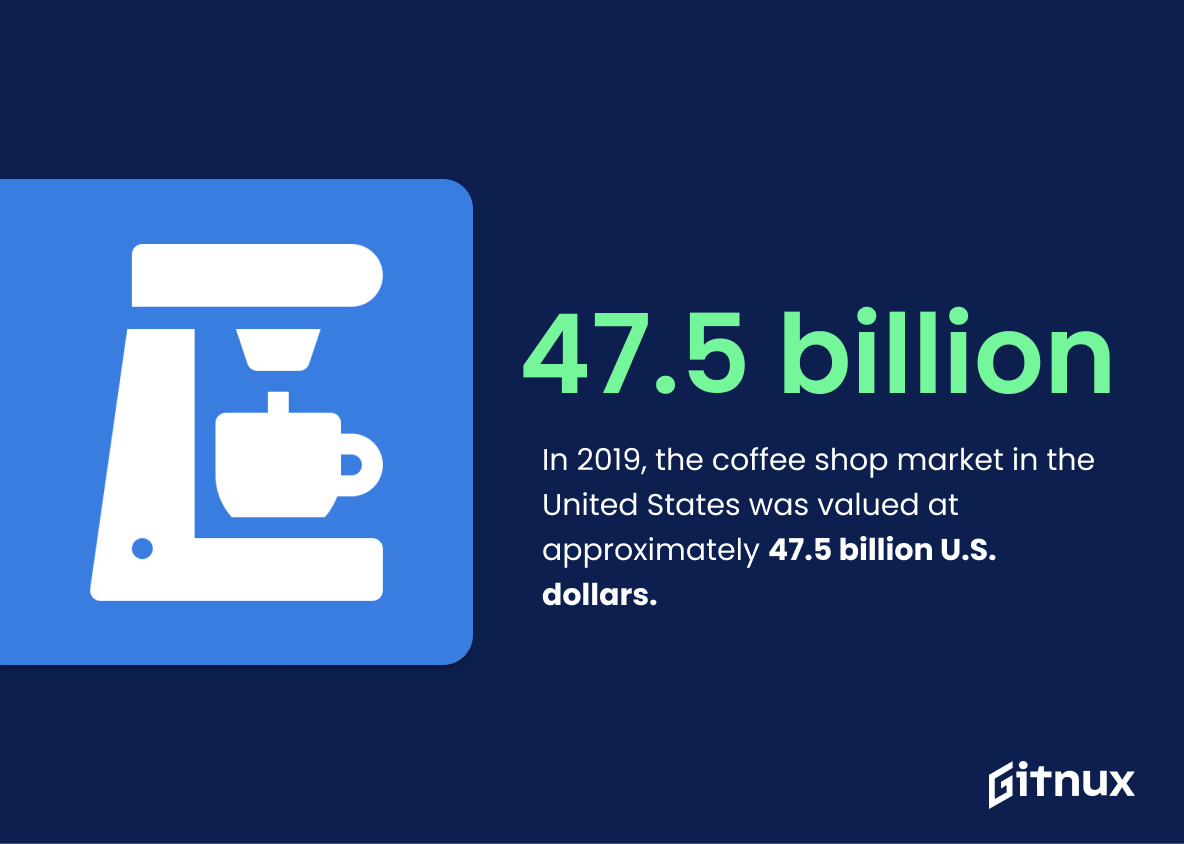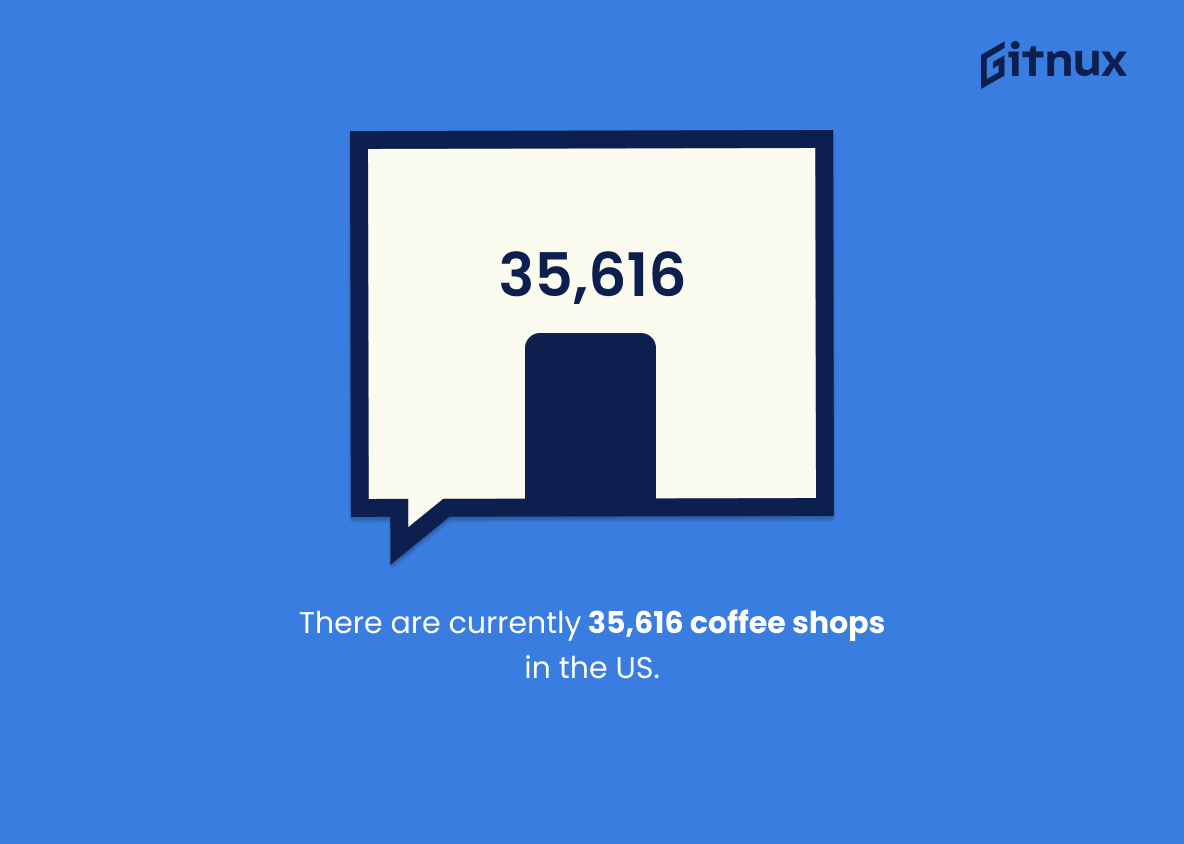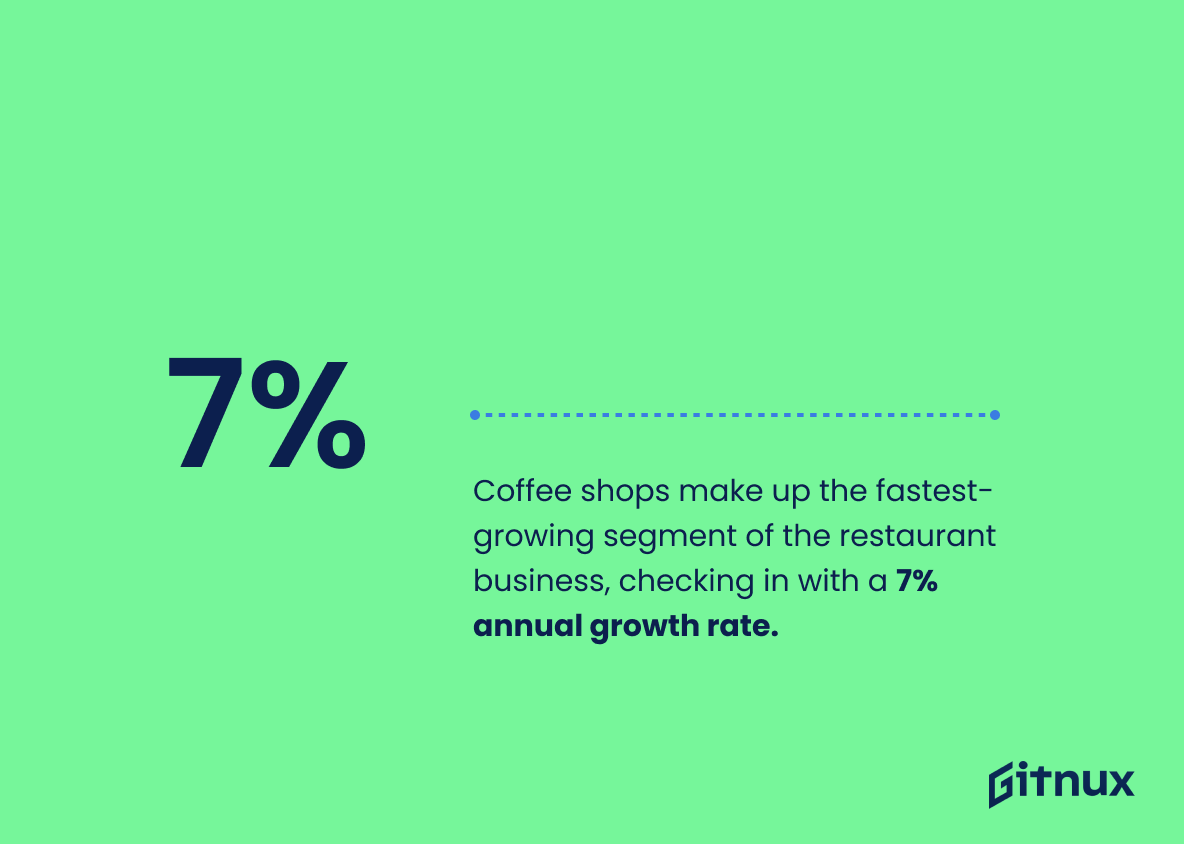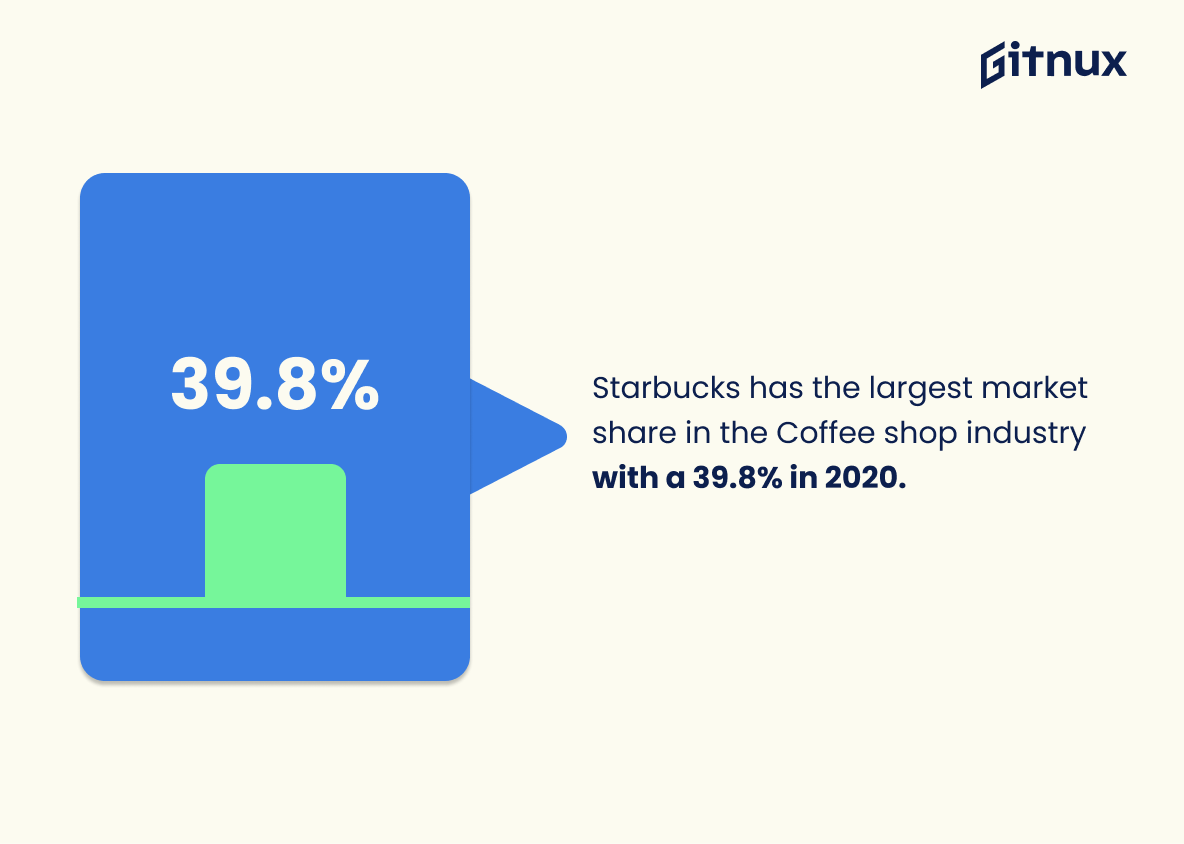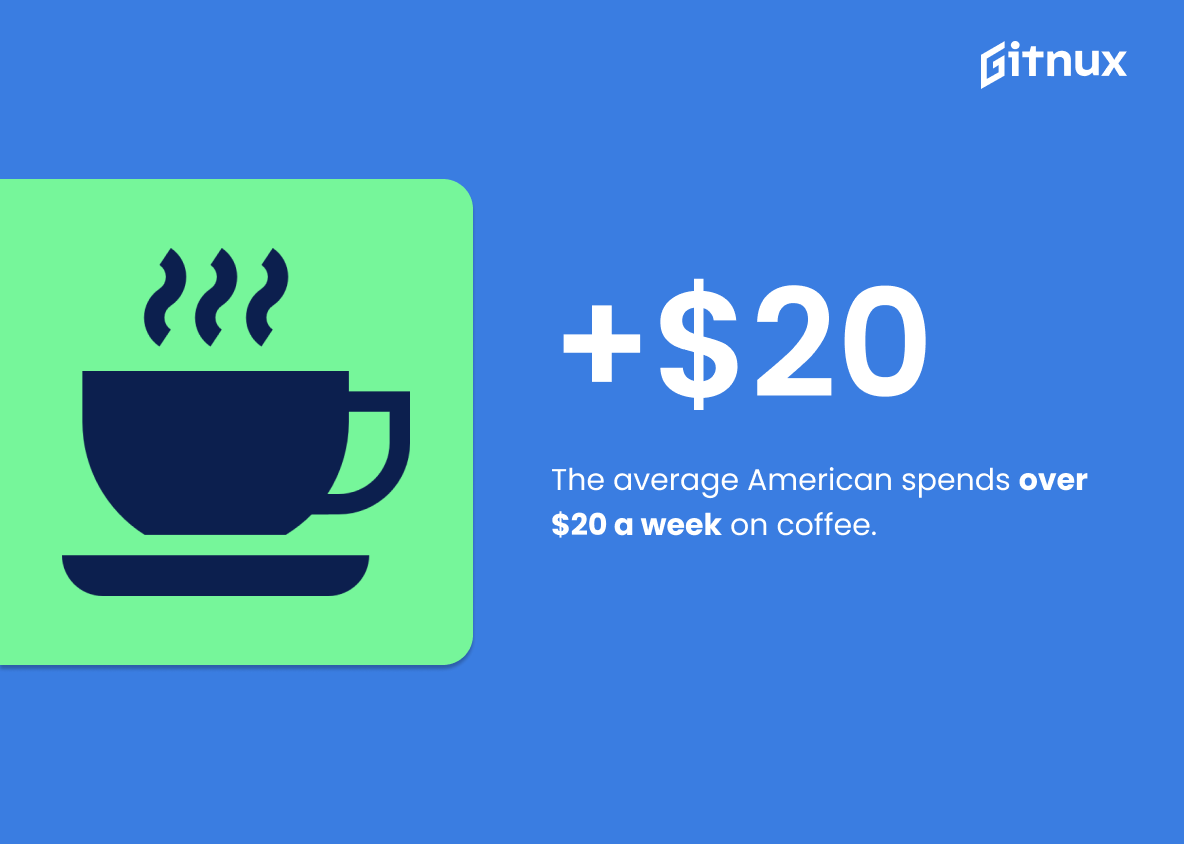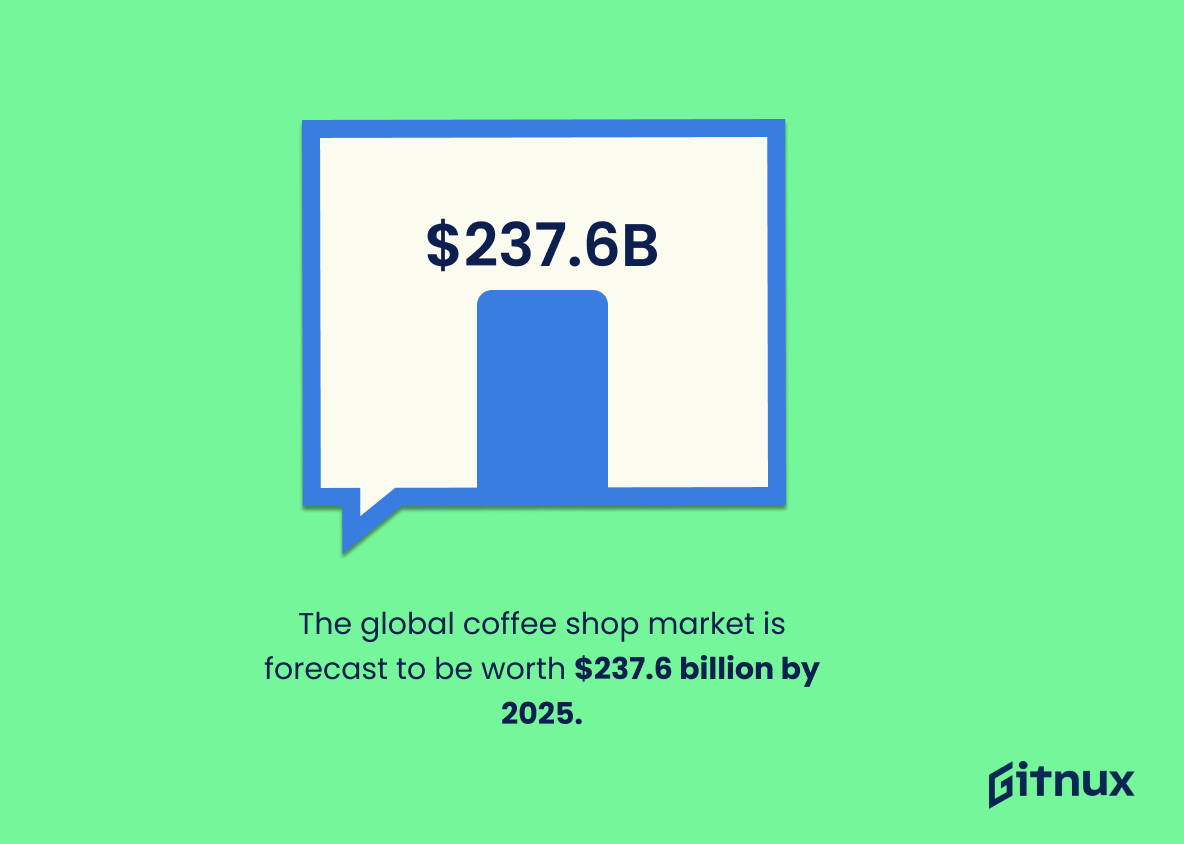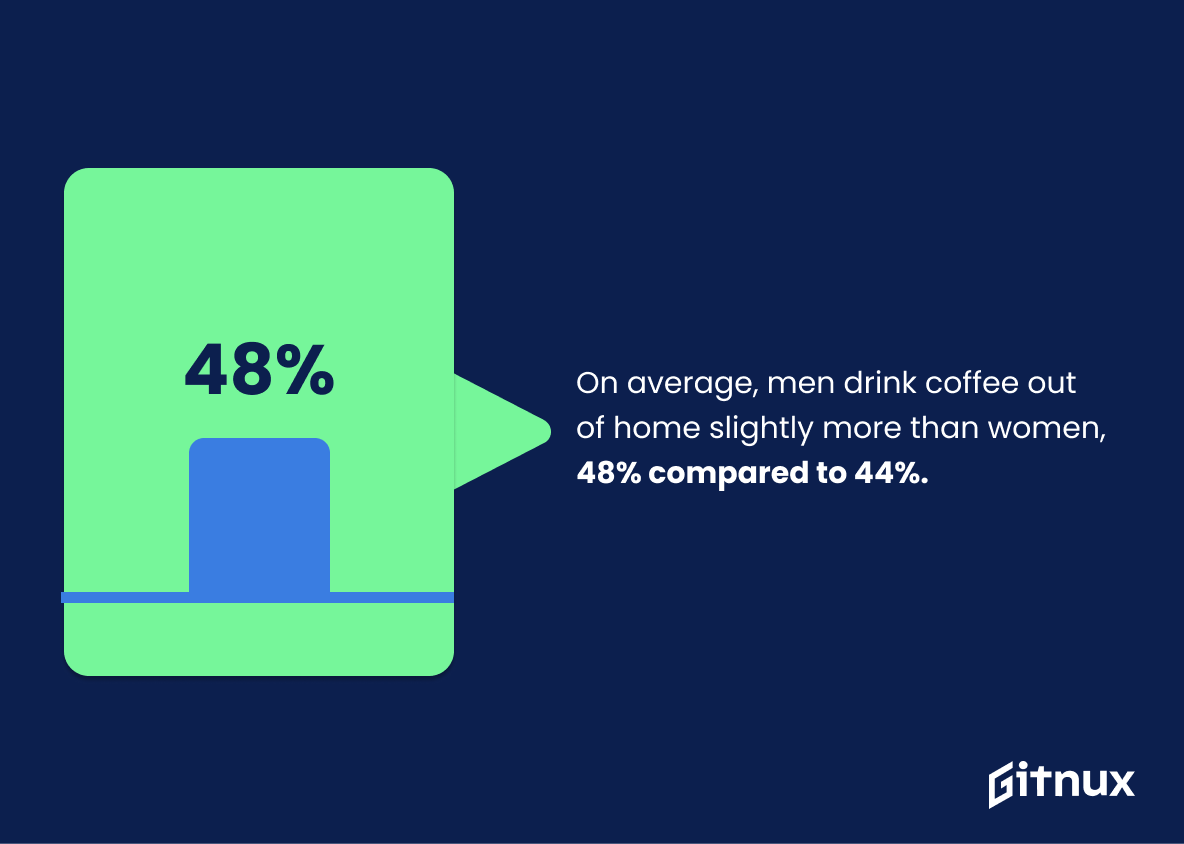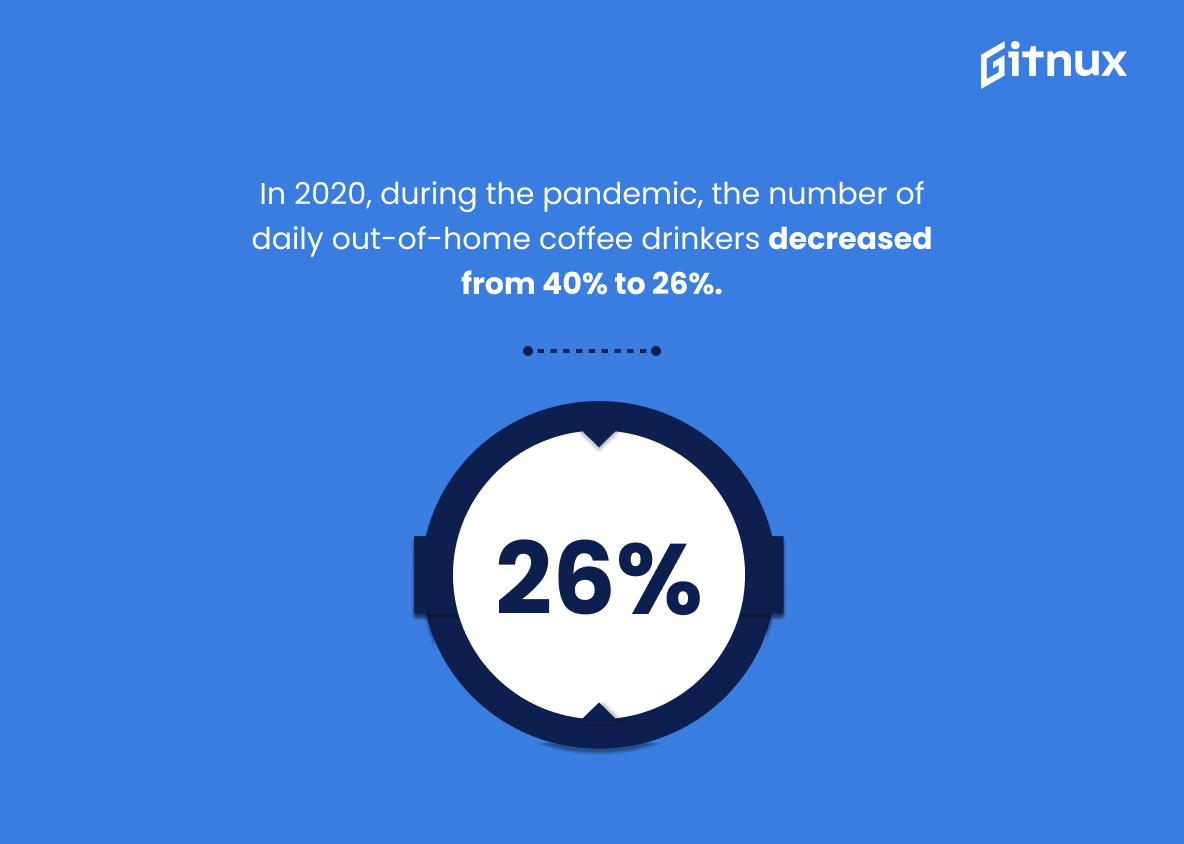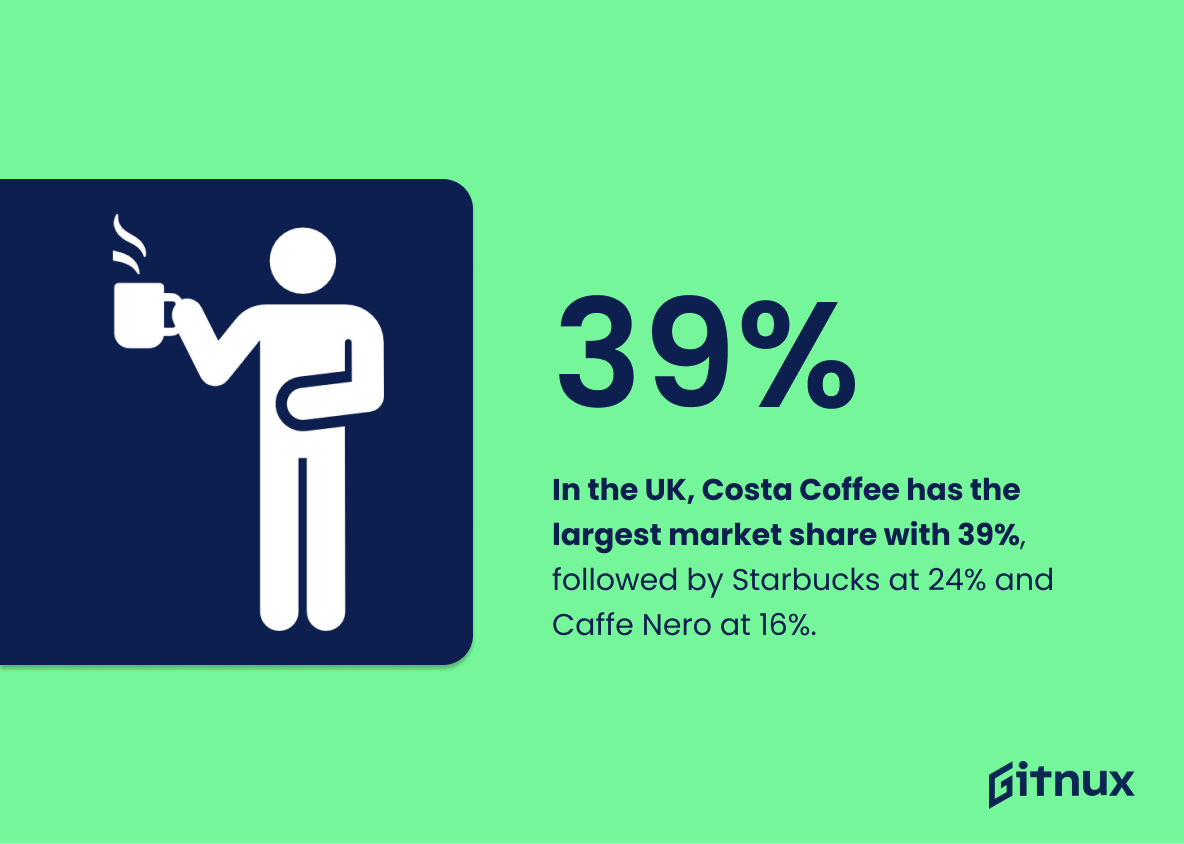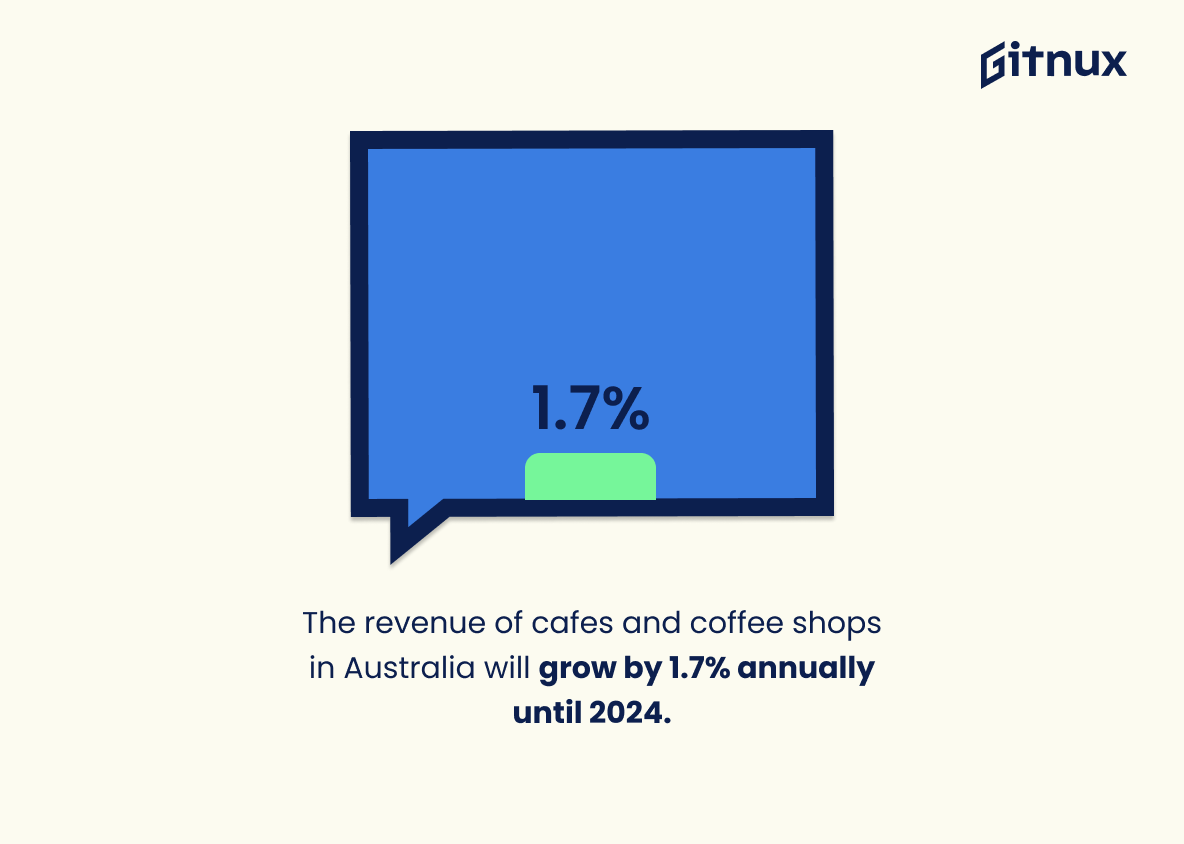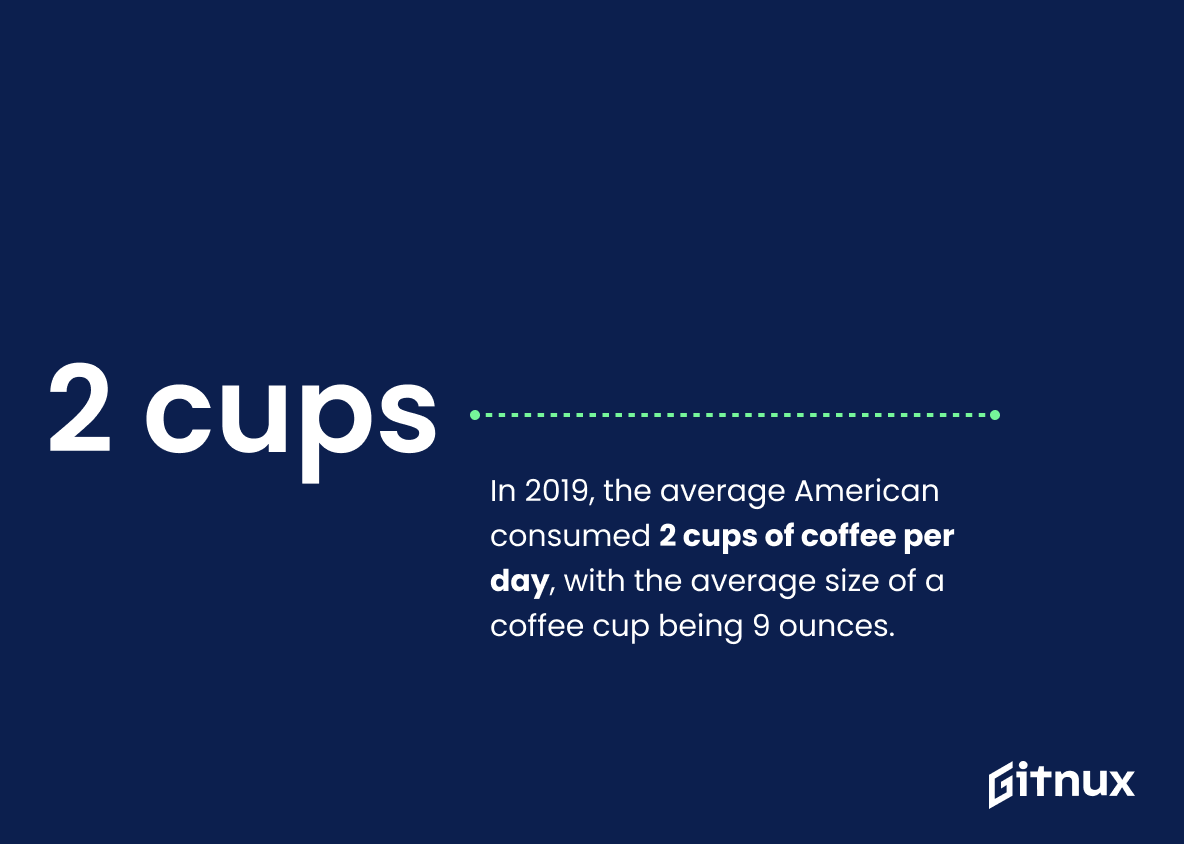As the aroma of freshly brewed coffee fills the air and acts as a warm welcome to visitors, the coffee shop industry brews up its own unique blend of economic contribution and consumption trends. Robust growth, fueled not just by caffeine but by the evolving consumer palate, continues to characterize this vibrant industry. In this in-depth scrutiny of the Coffee Shop Industry, we’ll grind through compelling data and frothy figures, steaming insights and perky statistics that unveil the intricate layers of this booming sector. Whether you’re a coffee entrepreneur, a seasoned barista, or a curious consumer, understanding these coffee shop industry statistics is sure to pique your interest and perhaps even percolate fresh ideas for brewing business success. So, get ready to sip on some hot analytics and steep in the rich culture of the coffee industry.
The Latest Coffee Shop Industry Statistics Unveiled
In 2019, the coffee shop market in the United States was valued at approximately 47.5 billion U.S. dollars.
The tantalizing aroma of numbers from 2019, paints an invigorating picture of the US Coffee Shop Industry, which, like a perfectly brewed cup of Java, exuded a rich value of approximately 47.5 billion U.S. dollars. This robust financial portrait underscores the market’s dynamism, highlighting its undeniable significance in the national economy. For readers percolating thoughts on the vitality of the Coffee Shop Industry, this numeric brew serves to implicate the sector’s potential for growth, profitability and investment opportunities. Such valuable insight is essential to understanding trends, savoring competitve analysis, and to stir future strategies for everyone – from budding entrepreneurs to established businesses.
There are currently 35,616 coffee shops in the US.
Peeking into the pulsating world of the caffeine industry, the figure – 35,616 coffee shops in the US, percolates the sheer volume of this sector. An eye-opening testament to the coffee culture’s undying popularity, this number brews up a clear image of the expansive landscape that the coffee shop industry constitutes. It underscores the thriving competition, beckons potential entrants with the scent of opportunity, and reveals the expansive consumer base buzzing for their daily coffee fix. By providing a broader perspective, it allows both industry enthusiasts and novices to appreciate the intoxicating aroma of potential growth and challenges steaming in this high-energy realm.
Recent research shows that coffee shops make up the fastest-growing segment of the restaurant business, checking in with a 7% annual growth rate.
In the booming echo-chamber of the restaurant industry, a distinctive buzz arises, caffeinated and robust, powered by an impressive 7% annual growth rate. This sound is none other than the coffee shop sector, burgeoning forth as the industry’s fastest-growing segment. Chase this aroma down and you’ll find, within a blog post dissecting Coffee Shop Industry Statistics, the key nuggets of data that underscore this pivotal trend. Here, we act as tour guide to the coffee connoisseurs, entrepreneurs, and market observers alike, plunging into the riveting world of espressos, lattes, and herbal teas, mapping out the pulsating heartbeat of not just an industry, but a culture, a lifestyle – and the accelerating drumbeat of growth that keeps it all in motion.
Starbucks has the largest market share in the Coffee shop industry with a 39.8% in 2020.
Unveiling the supremacy of Starbucks in the coffee shop industry with an imposing 39.8% market share in 2020, casts a spotlight on the domination of this coffee empire. It serves as a mind-boggling snippet of information for readers and enthusiasts engrossed in the coffee shop industry statistics. This emblematic data from Starbucks doesn’t just signify the giant’s colossal strength and position, but also underscores the competitive landscape that other players are grappling with. Understanding Starbucks’ market share also adds flavor to the readers’ knowledge brew, enabling them to get a stronger grasp of trends, consumer preferences, and business strategies that have been steaming up the coffee shop industry.
In 2018, 60% of coffee outlets in the US were specialty coffee shops.
Highlighting the statistic that in 2018, 60% of coffee outlets in the US were specialty coffee shops is particularly noteworthy in the context of our discussion on Coffee Shop Industry Statistics. This isn’t merely a fact, it’s a depiction of a progressive trend- a subtle indication toward an increasing consumer preference for tailor-made experiences over conventional ones. It signifies a shift in the sector marked by discerning tastes, unraveling a taste for blend diversity, brewing technique expertise, and a yearning for personalization in each cup served. Undeniably, the exploration of such industry insights can provide valuable clues for upcoming entrepreneurs and existing businesses, in strategizing their way to the customer’s heart or steaming cup, as the case may be.
The average American spends over $20 a week on coffee.
Shining a spotlight on the substantial investment of over $20 a week each average American dedicates to their coffee indulgence uncovers a goldmine of potential profits for the coffee shop industry. It highlights the integral role these humming caffeine havens hold in the weekly rhythm of consumers’ lives. It paints a picture of the consistent cash flow generated by the loyalty of these coffee aficionados. This financial commitment is a mirror reflecting the growing passion and dependency on coffee, making it more than just a beverage, but a culture, a habit and, importantly for businesses, a dependable revenue stream. Therefore, any fluctuations in this figure are akin to changes in the lifeblood of the coffee shop industry, making it a vital sign to track.
The global coffee shop market is forecast to be worth $237.6 billion by 2025.
Imagine launching a tiny ship into a vast sea teeming with potential treasures. That’s what you’re doing when you leap into the coffee shop industry; only in this case, the sea is the market, and the treasure is a staggering sum of $237.6 billion projected by 2025. This hefty figure astonishingly mirrors the burgeoning growth within the industry and pulsates with opportunities waiting to be sieved. Peeling back the layers of this statistic uncovers a lucrative roadmap for aspiring and existing entrepreneurs. It sets expectations, fuels ambition, and positions the coffee shop industry as an energetic nexus of innovation, profitability, and consumer demand for years to come.
The specialty coffee shop segment has an estimated $25 billion dollar retail value.
Delving into the depths of the coffee shop industry, a monumental figure surfaces- an impressive $25 billion retail value attributable solely to the sector’s specialty coffee shops. This colossal sum underscores not only the massive financial clout of this segment but also the profound consumer predilection for specialty brews. By providing a benchmark for potential growth, this statistic boldly draws a stirring portrait of opportunities awaiting those keen to immerse themselves in the specialty coffee business. Yet, it also issues a silent challenge: to continuously innovate and delight an increasingly discerning clientele who, as the market value suggests, are unafraid to splurge on their caffeine fix.
On average, men drink coffee out of home slightly more than women, 48% compared to 44%.
Delving into the heart of caffeinated conversations, this particular statistic brews a notable insight for the Coffee Shop Industry. It subtly hints at a potential gold mine for marketers and restauranteurs – the male demographic. With 48% of men regularly enjoying their coffee outside of home settings compared to 44% women, it serves as an appetizing opportunity for businesses to tailor their strategies, environment, and even menu offerings to attract the often under-catered male coffee aficionados. This uncovers a frothy layer of opportunity to stimulate industry growth one sip at a time. This is not just a number, rather it’s a wake-up call for the industry to widen its focus and embrace a broader client base for maximizing profits and popularity in the competitive landscape of brewing coffee cultures.
In 2020, during the pandemic, the number of daily out-of-home coffee drinkers decreased from 40% to 26%.
This poignant shift from 40% to 26% in daily out-of-home coffee drinkers amid the 2020 pandemic serves as a wake-up call, no less powerful than a shot of espresso, screaming changes in the behavior of coffee consumers around the globe. A vital pulse check for the coffee shop industry, this decline exposes the deep impact of global events on consumer habits, giving industry players a pressing reason to rethink traditional business strategies. Stimulating insights like this are brewing grounds for innovation, possibly shaping the future of café culture as we continue to adjust and evolve in the post-pandemic world.
In the UK, Costa Coffee has the largest market share with 39%, followed by Starbucks at 24% and Caffe Nero at 16%.
Diving into the heart of the Coffee Shop Industry statistics, it’s stimulating to see Costa Coffee brewing stronger than its compatriots in the UK, savoring a grand market share of 39%. This imposing figure does not only symbolize their dominance but also reveals their winning blend of quality, service and pricing that has hooked UK coffee lovers.
Equally telling is the tale of Starbucks – not quite on Costa’s coattails, but still frothing nicely with a robust 24% share. This American powerhouse, besides selling coffee, appears to be selling an experience too, which resonates with a considerable percentage of UK consumers.
Shadowing these two more closely is Caffe Nero – with a 16% grip on the market. Despite trailing, their notable market presence signifies that the race is far from over and competition remains high within the industry.
Exposing these numbers in the Coffee Shop Industry statistics story gives a caffeinated perspective about its competitive landscape, the consumer preference, and the tactical practices that push these brands to their current positions.
The revenue of cafes and coffee shops in Australia will grow by 1.7% annually until 2024.
Peeking into the crystal ball of the constantly changing coffee shop industry, the prediction of a 1.7% annual growth in revenue for Australian cafes until 2024 sparkles with significance. It not only bursts with favorable news for existing players in the café landscape, but also paints an inviting picture for potential new entrants.
The prospect of this steady growth hints at the resilience of the industry even when facing economic turbulence. It whispers a tale of the rising popularity of coffee culture in Australia, hinting that the once petite ‘coffee bean’ has now blossomed into one of the most lucrative crops.
Moreover, this growing revenue trend addresses the appetite of investors, serving an enticing espresso shot of confidence for those betting on the industry’s financial performance. It also allows entrepreneurs, with their dreams brewing, to analyse and prepare for the challenges and opportunities lying ahead on barista counters. This statistic, as such, is a notable ingredient in painting the landscape of the blog post about Coffee Shop Industry Statistics.
In 2019, the average American consumed 2 cups of coffee per day, with the average size of a coffee cup being 9 ounces.
Evaluating the said figures helps illuminate the importance of coffee in American society, which indirectly speaks to the scope and potential success of the coffee shop industry. It’s not simply about the calculation of raw numbers – the figure of 2 cups per day, and an average size of 9 ounces illustrate the deeply ingrained ritual of coffee consumption. This provides grounds for predicting continued, consistent demand. Furthermore, this also indicates a willingness among Americans to invest in their daily caffeine fix, suggesting a resilient customer base for businesses in this sector. Essentially, interpreting these numbers not only offers insights into the magnitude of the market, but also helps to brew up a clearer picture of consumer behavior patterns.
Conclusion
In summary, the coffee shop industry is rapidly growing and showing no signs of slowing down. From increasing numbers of coffee consumers to the emergence of unique trends and innovations, it’s an ever-evolving business landscape. However, despite facing some challenges due to changing consumer preferences and economic scenarios, coffee shops are continually adapting to meet their customers’ needs. With sustainability, quality, and customer service at the forefront of their practices, they continue to thrive in an increasingly competitive market. These vital industry statistics not only reveal the current state of the coffee shop industry but also pave the way for future opportunities and growth projections. Understanding these statistics can help both existing business owners and budding entrepreneurs alike to navigate and thrive in this lucrative industry.
References
0. – https://www.www.statista.com
1. – https://www.www.cnbc.com
2. – https://www.www.perfectdailygrind.com
3. – https://www.www.ibisworld.com
4. – https://www.nationalcoffee.blog
5. – https://www.squareup.com
6. – https://www.www.qsrmagazine.com
7. – https://www.www.globenewswire.com
8. – https://www.dailyburn.com
9. – https://www.www.ncausa.org
